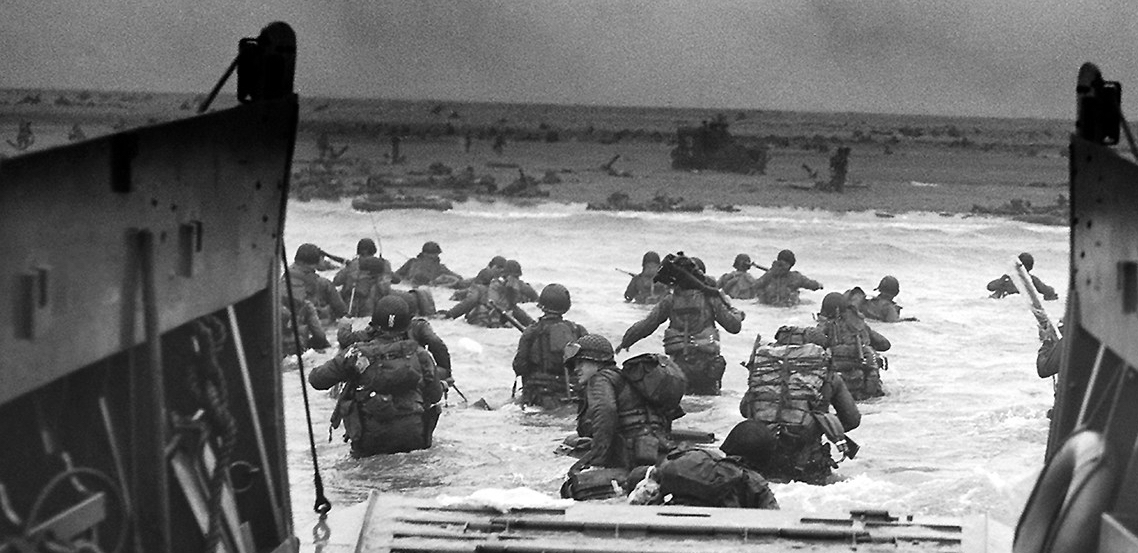World War II saw America’s armed forces deployed literally across the globe. Never before or since have our service members performed their duties in so many places. Some parts of the world – especially in Europe – were easily identifiable, but others were almost impossible to find on a map. More than one serviceman scratched his head when learning his unit’s destination.
Before the war, Americans got their impressions of the Pacific islands from the Bob Hope and Bing Crosby Road pictures, or from the pages of the National Geographic. Most people imagined balmy tropical breezes, swaying palm trees, and beautiful sandy beaches. The reality of life in the Pacific was altogether different for Marines and Soldiers at war.

Bougainville was one of the fly specks on the map that meant life and death in 1943-44. Located at the top of the Solomons chain, Bougainville was a totally alien environment to our fighting men, even those who hailed from the tropical areas of the southern United States.
The misty, lush green hills looked like pictures in a travelogue. But on landing, Marines and Soldiers discovered a landscape so alien; it may as well have been on the Moon. Some Marines quipped that the Moon would have been preferable to the Solomons, since in outer space, at least the nights were cool.
Like many islands of the South Pacific, dense tropical jungles covered Bougainville’s harsh terrain. Marines quickly learned that the postcard-like views hid mud, rotting vegetation, sluggish jungle streams, and an ever-present hoard of malaria-carrying mosquitoes.

Bougainville ranked among the most primitive landscapes on earth. Under the heavy canopy, daytime became dusk and the nights were as dark as a closet. Marines quickly learned to button-up in their fighting holes after dusk. Anyone foolish or brave enough to wander above ground after nightfall risked being shot by a sentry.

Everyone who set foot on the island agreed – it was a tropical hellhole. Temperatures hovered near 100 degrees in the afternoon and the high humidity made it impossible to drink enough water. Fungal infections took hold and personal hygiene went out the window in the front lines. It rained nearly every day and when it wasn’t raining, the ever-present glutinous mud created untold misery.
“As a matter of fact, I think it rained at four o’clock every day I was on that goddamn island.”1
As with every Pacific battleground, the Japanese were experts at blending natural obstacles with man-made fortifications. They used coral, coconut logs, concrete and sand to produce masterful defensive works. These could only be reduced through sound tactics, and incredible bravery.
“It was that kind of fighting–savage, close, primitive. … McCaffery fell, mortally stricken. [Maj. Spike] Mason was wounded. He refused evacuation, for he feared a counterattack and had no wish to be the living commander of a lost battalion. … “Get the hell in there and fight!” he swore, and the assault swept on until the smoke and yells and roar of battle had faded…3

In the daily battle for survival, tropical diseases could be as dangerous as the Japanese. Malaria, Dengue fever, rampant fungal infections, and dysentery sucked the energy and life from thousands of victims. Also, flies, land crabs, and bloodthirsty insects of every sort were all part of daily (and nightly) life.
“… Of the twenty-eight months I spent overseas, nothing compared to Bougainville for miserable living conditions we had to put up with. … Bougainville had to the closest thing to a living hell that I ever saw in my life.”2
With the images that accompany this short essay, I’ve tried to capture something of Bougainville’s essence. I’ve never been to that island, but the jungles of Panama, northern Okinawa, and the Philippines were all places I visited during my military service in the Cold War. Even with that background, it’s difficult to imagine just how bad Bougainville was. I have the utmost respect for the brave Americans who fought there in World War II.
Never forget, Mark
NOTES
- Observation of a Soldier on Bougainville as recorded on page 90 of Desperate Surgery in the Pacific War by Thomas Telling, M.D., McFarland & Company, 2017.
- Recollection of Chuck Ables, 3rd Marine Division, who also served in combat on Guam and Iwo Jima. Recorded on page66 of Touched by Fire – the Land War in the South Pacific by Eric Bergerud, Penguin Group, 1996.
- Description of 1st Battalion, Third Marines’ D-Day assault on the Bougainville beach head. Recorded in Strong Men Armed: the United States Marines versus Japan by Robert Leckie, Da Capo Press, 1997.

Mark, we corresponded years ago about the Pacific war. My late Father was a Seabee, Spent 27 months in the Pacific, 3 campaigns, One of them was Bougainville. A real Hellhole. I was just sent your site.
Hello John, and thanks for your message. I remember you and the work you’ve done commemorating our Seabees. My old website became obsolete (the software) and it took me several years to figure out a format I liked. I still have access to the material and am slowly converting some of the content into my new-ish site.
Best, Mark